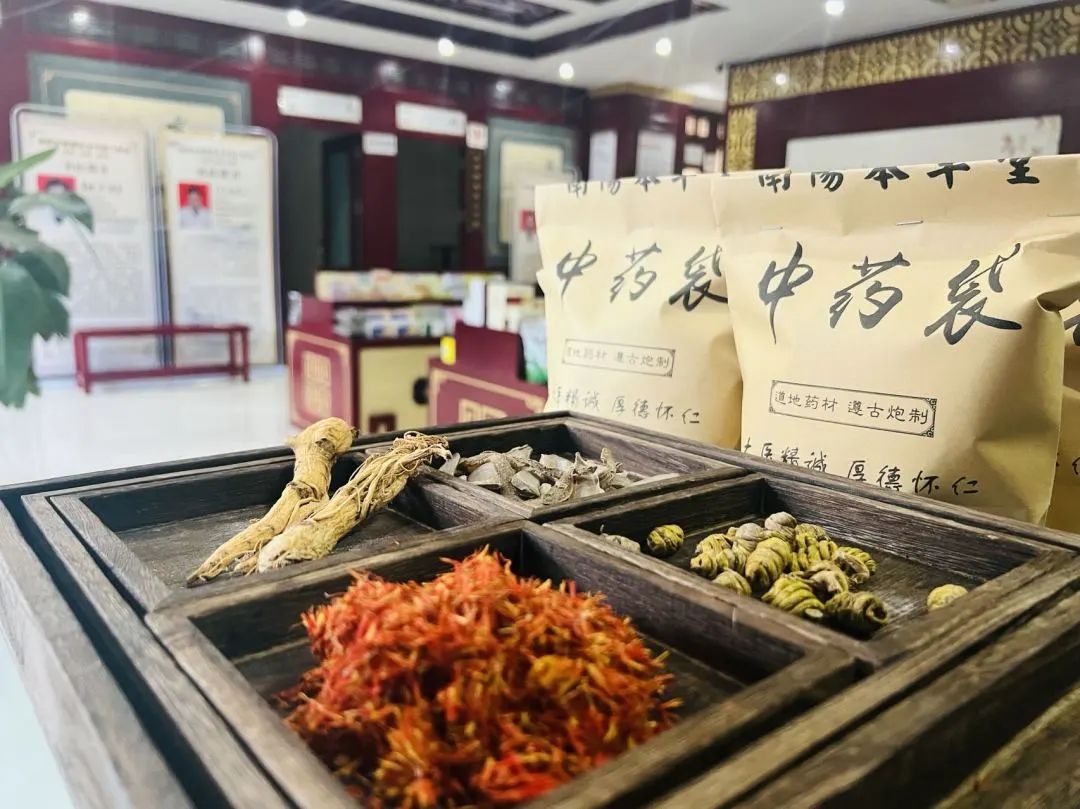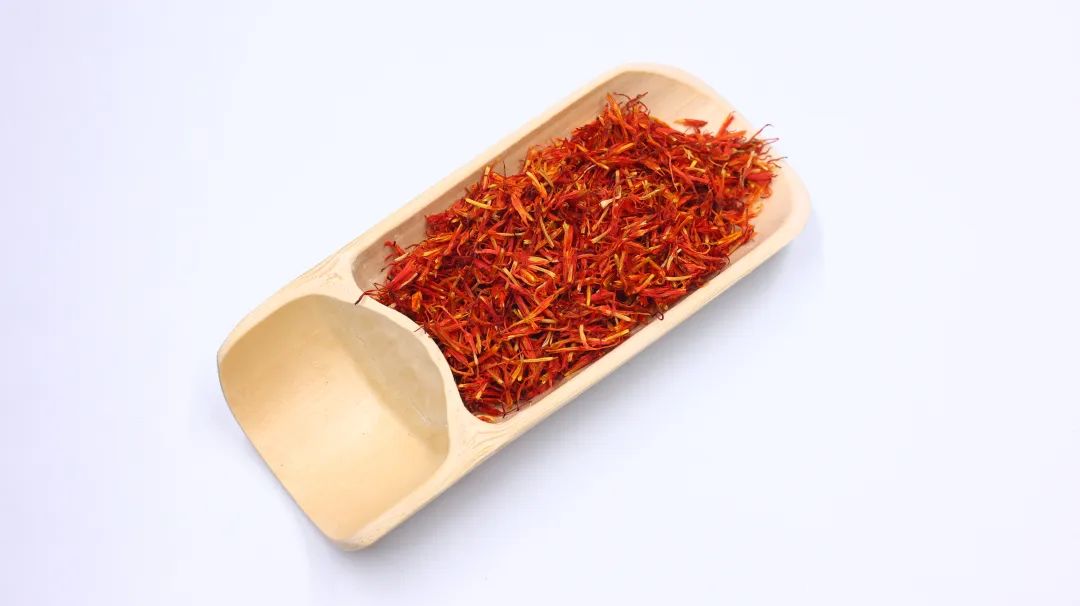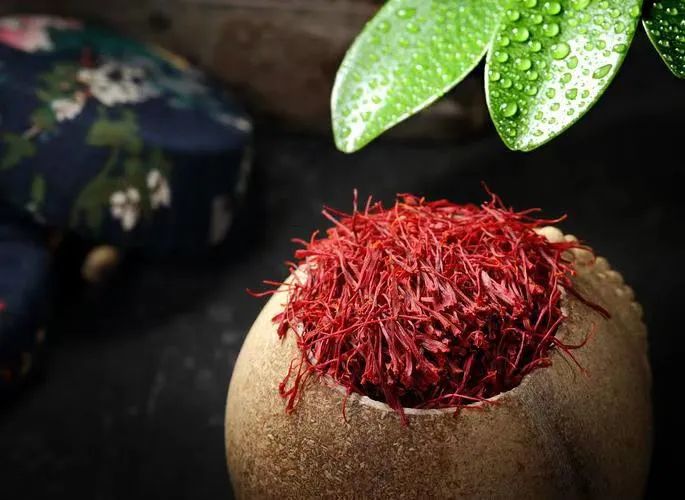 Hong Hua (Safflower) is a commonly used blood-activating herb, but those unfamiliar with it often mistakenly believe that “Zang Hong Hua (Saffron)” is of superior quality, leading to the misconception that safflower from Tibet is called Zang Hong Hua. This is not the case; there are two misunderstandings here: first, although Hong Hua and Zang Hong Hua have similar effects, they are not the same plant, and their medicinal properties differ; second, despite the name containing “Zang,” Tibet is not the original habitat of Zang Hong Hua. Let’s discuss the details about the traditional Chinese medicine Hong Hua!
Hong Hua (Safflower) is a commonly used blood-activating herb, but those unfamiliar with it often mistakenly believe that “Zang Hong Hua (Saffron)” is of superior quality, leading to the misconception that safflower from Tibet is called Zang Hong Hua. This is not the case; there are two misunderstandings here: first, although Hong Hua and Zang Hong Hua have similar effects, they are not the same plant, and their medicinal properties differ; second, despite the name containing “Zang,” Tibet is not the original habitat of Zang Hong Hua. Let’s discuss the details about the traditional Chinese medicine Hong Hua!

First, let’s talk about Hong Hua. Hong Hua is the dried flower of the plant Carthamus tinctorius, belonging to the blood-activating and stasis-resolving category of herbs. It has a pungent flavor and a warm nature, and it enters the Heart and Liver meridians. It is known for its ability to invigorate blood circulation, regulate menstruation, and alleviate pain. It is used to treat conditions such as amenorrhea, dysmenorrhea, retained lochia, abdominal masses, traumatic injuries, and painful sores.
The typical dosage for internal use is 3-9 grams, and for external use, an appropriate amount. Due to its strong blood-activating and stasis-resolving properties, Hong Hua is often depicted in many historical dramas as an abortifacient. Indeed, caution is advised for pregnant women and patients with a tendency to bleed.
The main functions of Hong Hua include two aspects: invigorating blood circulation and alleviating pain.
As a blood-activating and menstruation-regulating herb, Hong Hua is widely used for menstrual irregularities caused by blood stasis; as a pain-relieving herb, it can be used for various blood stasis-related pain syndromes, such as abscesses, traumatic injuries, and rheumatic pain, and it can also treat chest pain due to blood stasis.
Hong Hua has a wide range of applications. Zhang Tingmo believes it is entirely appropriate to classify it as a pain-relieving herb. Many acupuncture departments in hospitals commonly use Hong Hua injection as a local point injection medication, which has a good effect on unblocking meridians and promoting blood circulation.
Zhang Zhongjing in the Jin Kui Yao Lue once used Hong Hua alone to make a medicinal wine called “Hong Lan Hua Jiu Fang,” which has excellent blood-activating and stasis-resolving effects, often used to treat gynecological blood stasis syndromes.

The Yi Zong Jin Jian adds Xing Ren (Apricot Kernel) and Hong Hua to the famous blood-nourishing formula Si Wu Tang, transforming it into Tao Hong Si Wu Tang, which has excellent effects in nourishing blood, invigorating blood circulation, and resolving stasis, particularly for treating gynecological menstrual disorders caused by deficiency leading to stasis. This frequent clinical use may explain why Hong Hua is classified as a blood-activating and menstruation-regulating herb.
In fact, Hong Hua is used in many famous formulas as a pain-relieving herb, such as Xue Fu Zhu Yu Tang, Tong Qiao Huo Xue Tang, and Shen Tong Zhu Yu Tang, created by the renowned Qing Dynasty physician Wang Qingren, all of which utilize Hong Hua for its excellent blood-activating and pain-relieving properties.
Li Gao’s Yi Xue Fa Ming includes Fu Yuan Huo Xue Tang, which combines Hong Hua with Xing Ren, Chai Hu, Gua Lou Gen, Dang Gui, Gan Cao, Chuan Shan Jia, and Da Huang, providing excellent blood-activating, stasis-resolving, and liver-qi regulating effects, primarily used for traumatic injuries, blood stasis under the ribs, and intolerable pain.

So what kind of herb is Zang Hong Hua?
Zang Hong Hua, also known as Fan Hong Hua (Crocus sativus) or Xihonghua (Saffron), is the dried stigma of the plant Crocus sativus, belonging to the Iridaceae family. It has a sweet flavor and a neutral nature (some texts consider it cool), and it enters the Heart and Liver meridians. It is known for its ability to invigorate blood circulation, cool the blood, detoxify, and calm the mind.
It is used to treat conditions such as amenorrhea, postpartum stasis, warm toxin-induced rashes, depression, and manic episodes. The typical dosage is 3-9 grams.
It is evident that Zang Hong Hua differs significantly from Hong Hua in terms of plant origin; one is from the Iridaceae family, while the other is from the Asteraceae family. Zang Hong Hua originally came from Central Asia and southwestern Europe, later introduced to Tibet through South Asia, and then spread to various regions. People commonly add “Zang” or “Fan” to items introduced from Tibet, and since they found its effects similar to those of Hong Hua, they named it Zang Hong Hua.
Because the medicinal part of Zang Hong Hua is not the flower itself, but the stigma within the flower. Each flower of Zang Hong Hua contains a stigma as thick as a toothpick, but not as long, resulting in a very low yield and high price. Many people blindly worship it, believing that expensive is good, which is quite unwise.
In terms of unblocking meridians and activating blood flow, Zang Hong Hua has almost no advantage over Hong Hua. However, Zang Hong Hua’s properties tend to be neutral or cool, while Hong Hua is warm, making it a cold blood-activating and stasis-resolving herb. Additionally, Zang Hong Hua has heat-clearing and detoxifying properties, which can be beneficial for patients with excessive heat toxins and blood heat stasis; thus, adding Zang Hong Hua can be effective. However, for regular health maintenance, there is no need to pursue Zang Hong Hua over Hong Hua for making medicinal wine.
For more health knowledge, please scan the QR code below to follow our WeChat public account.


